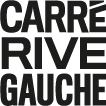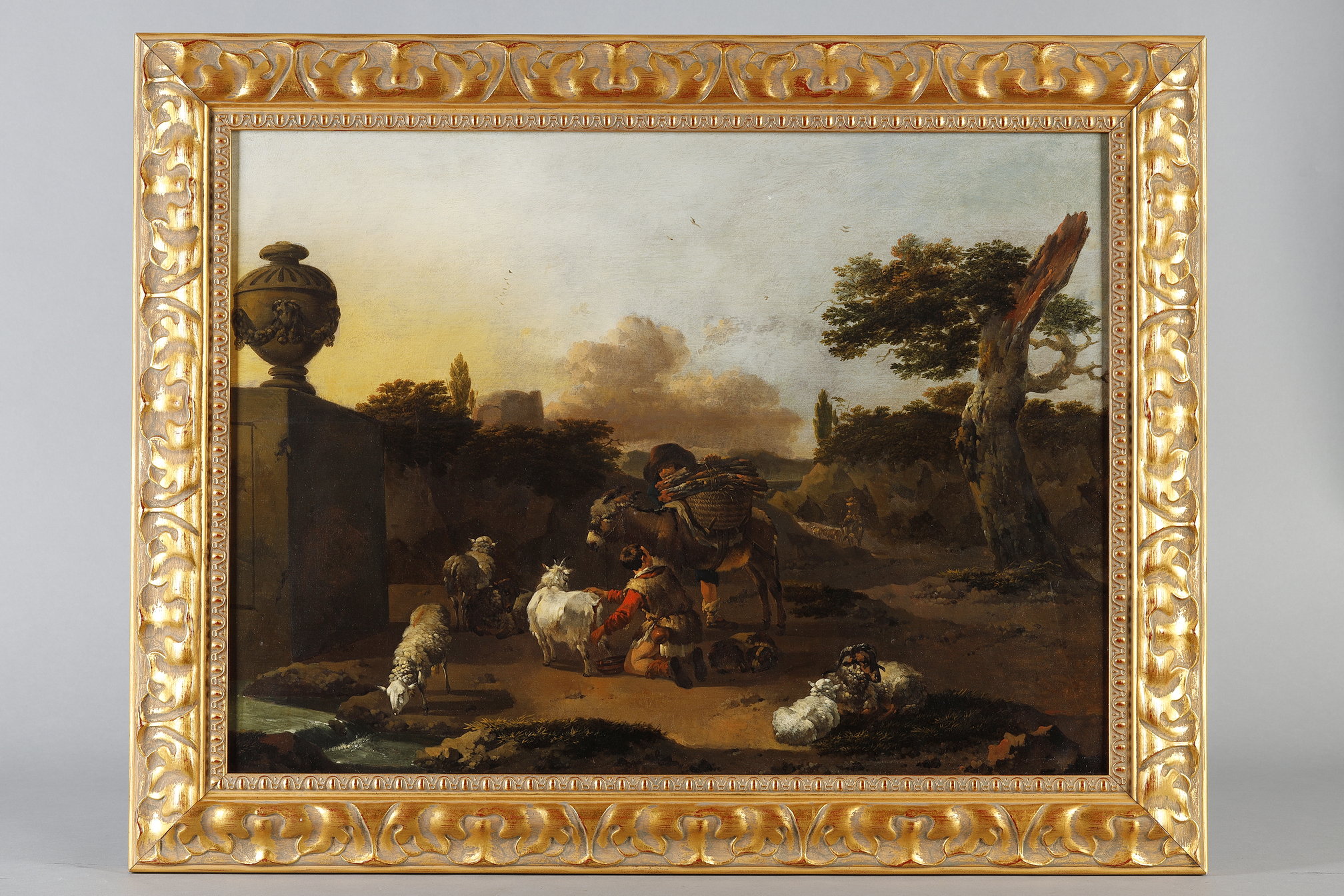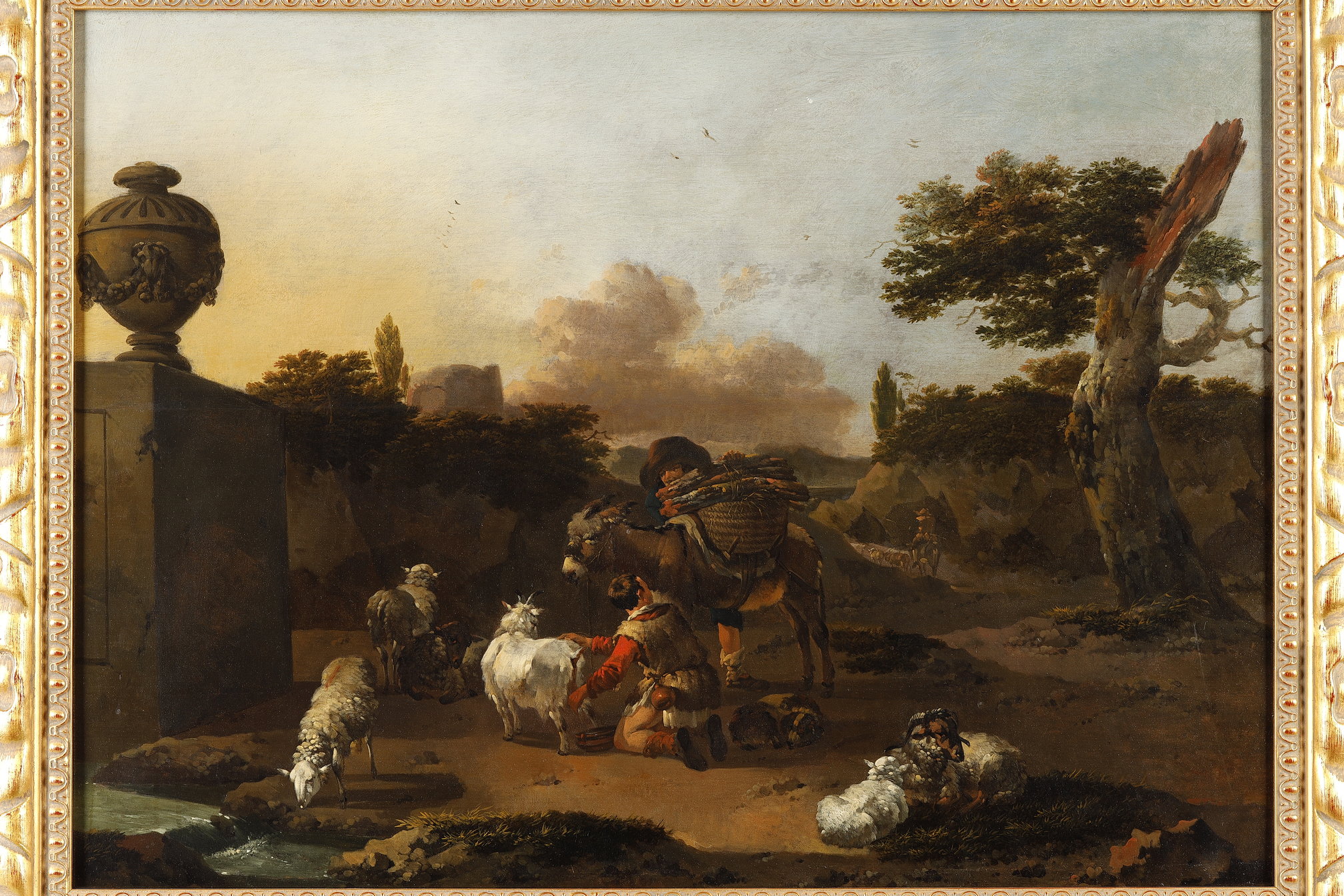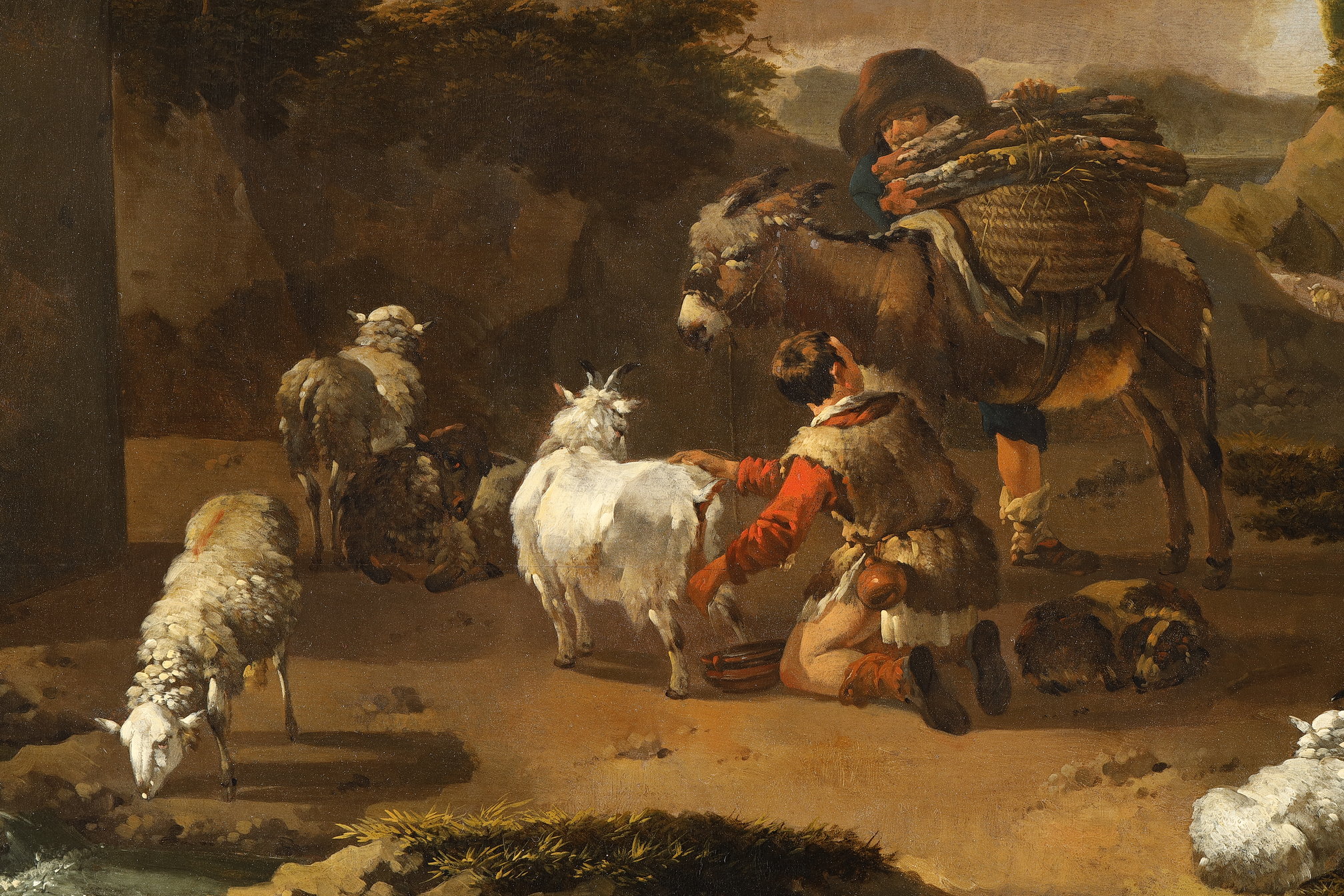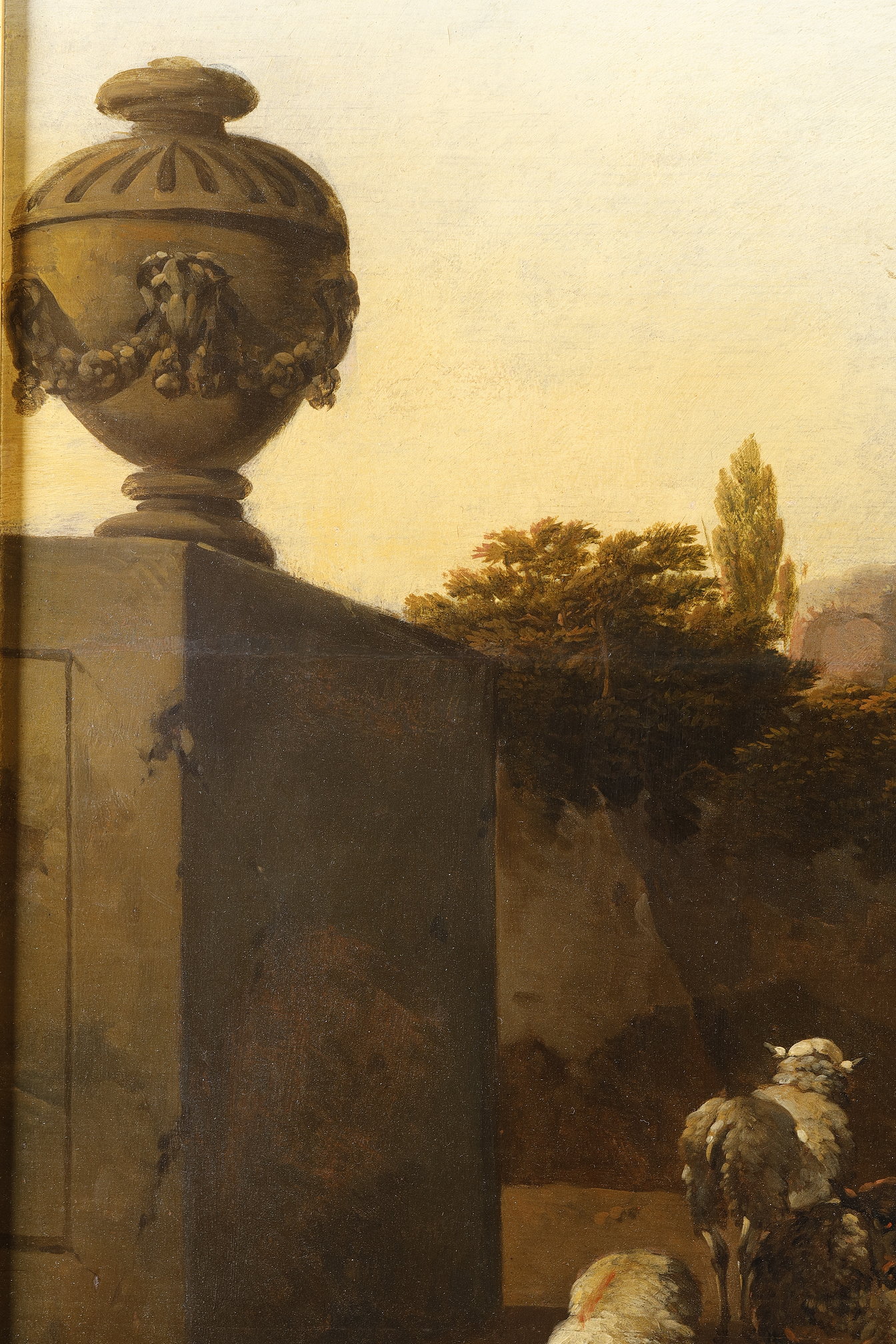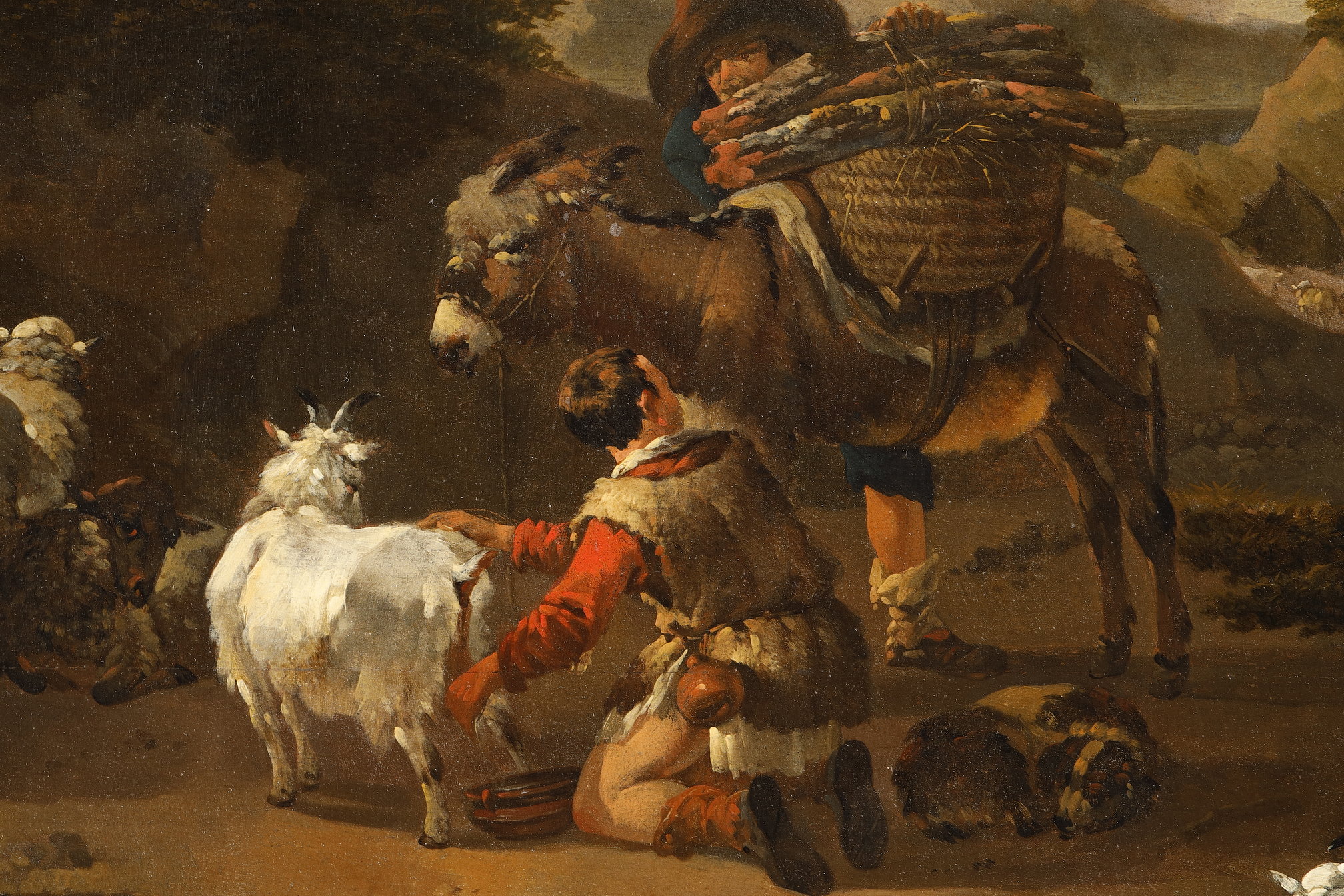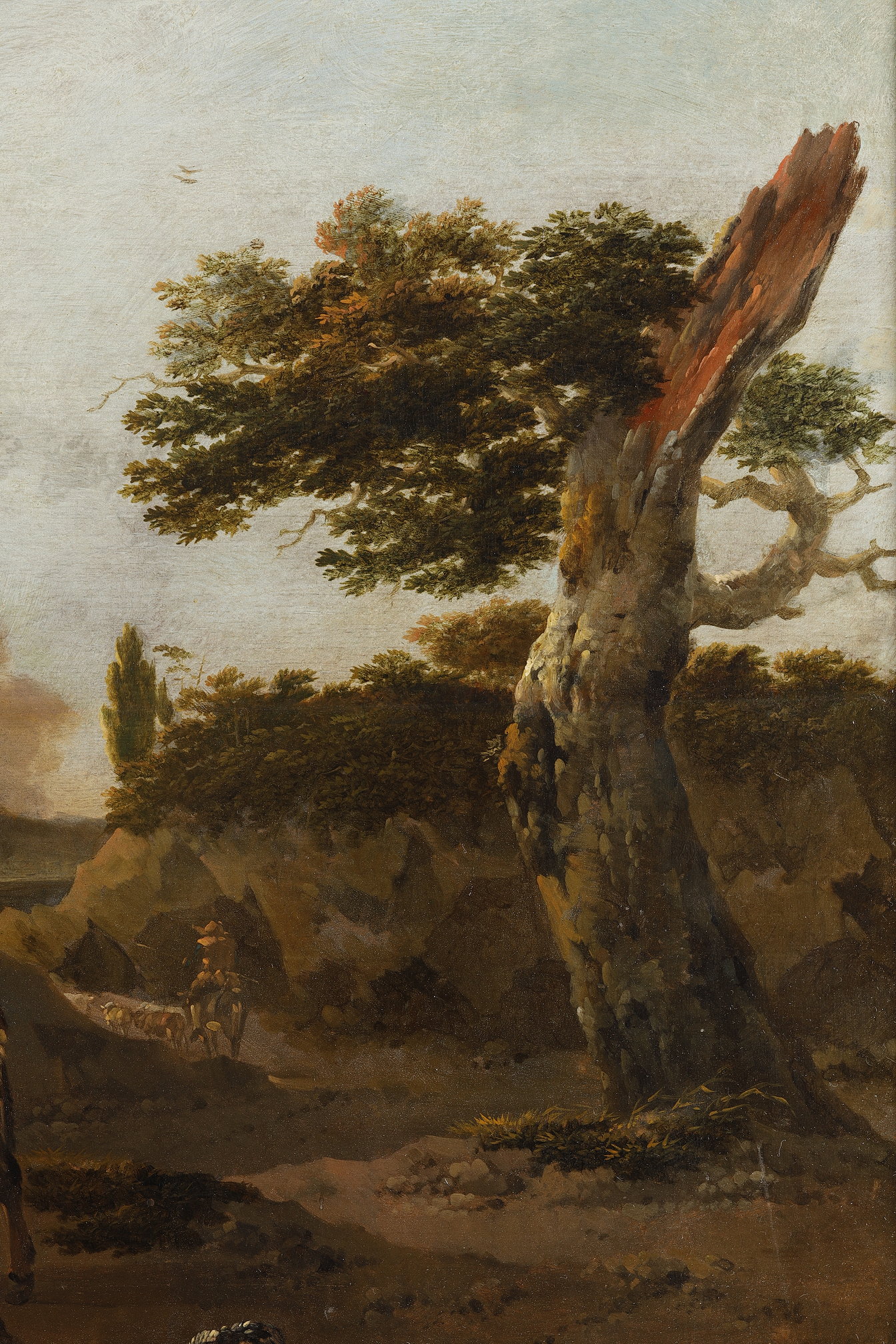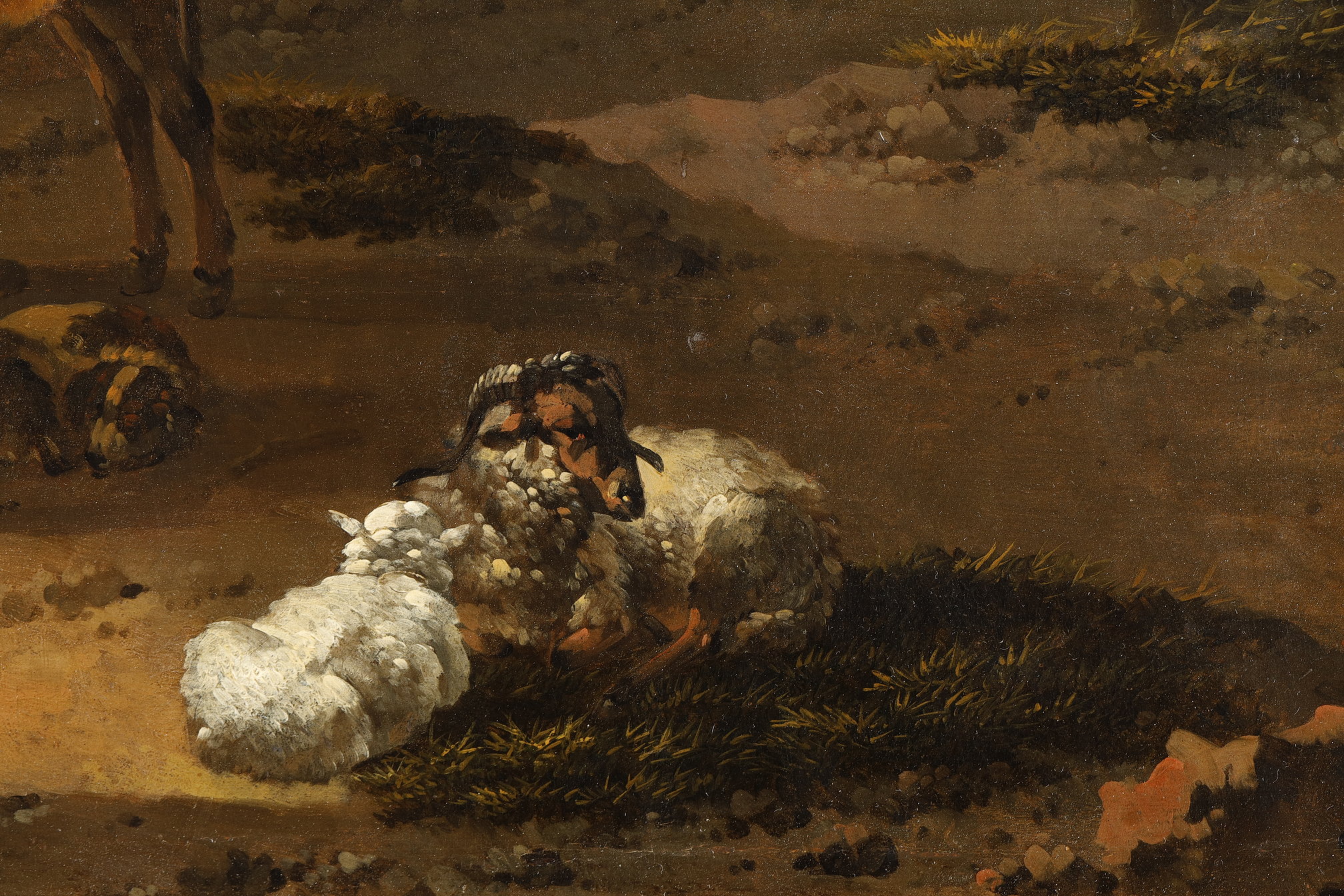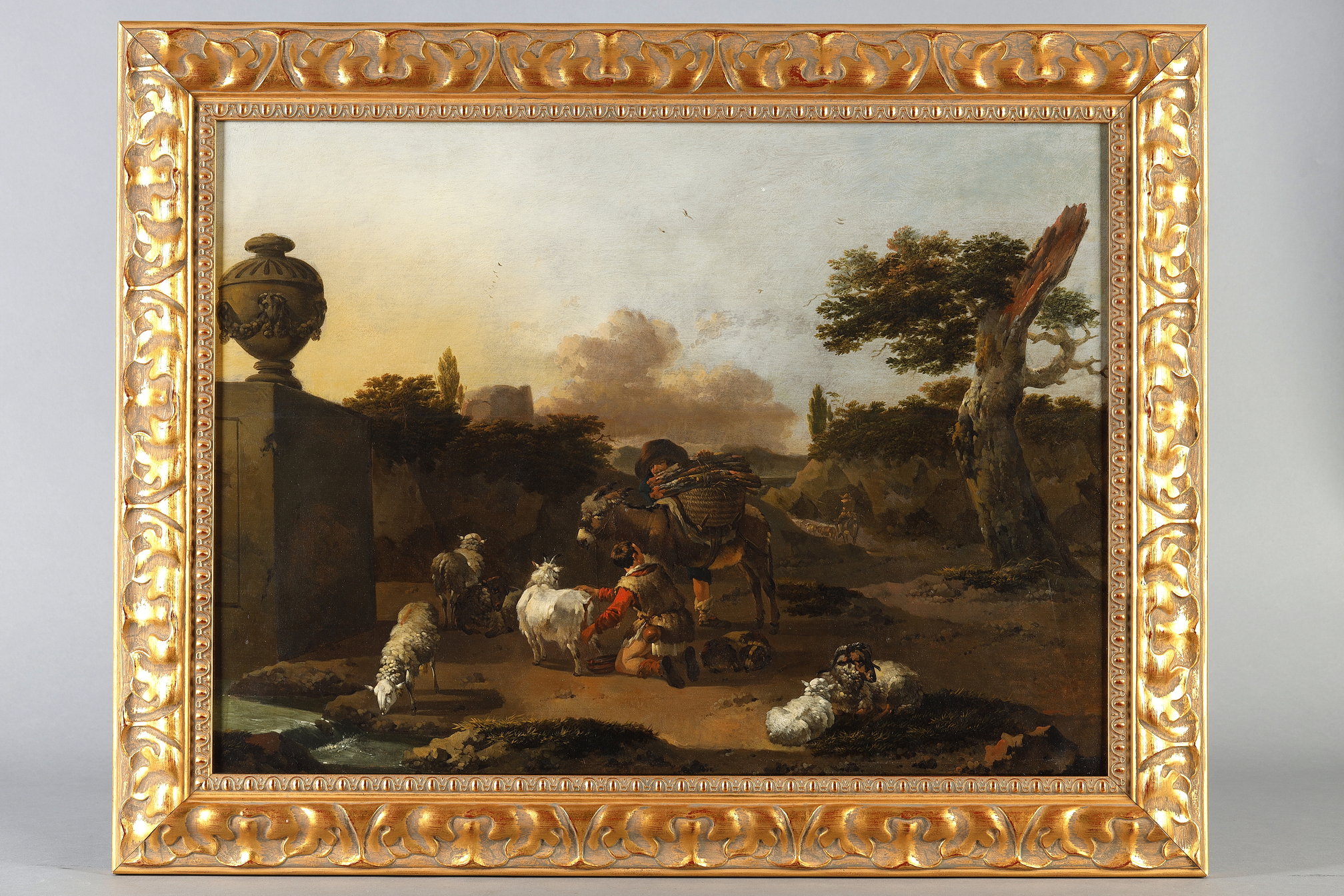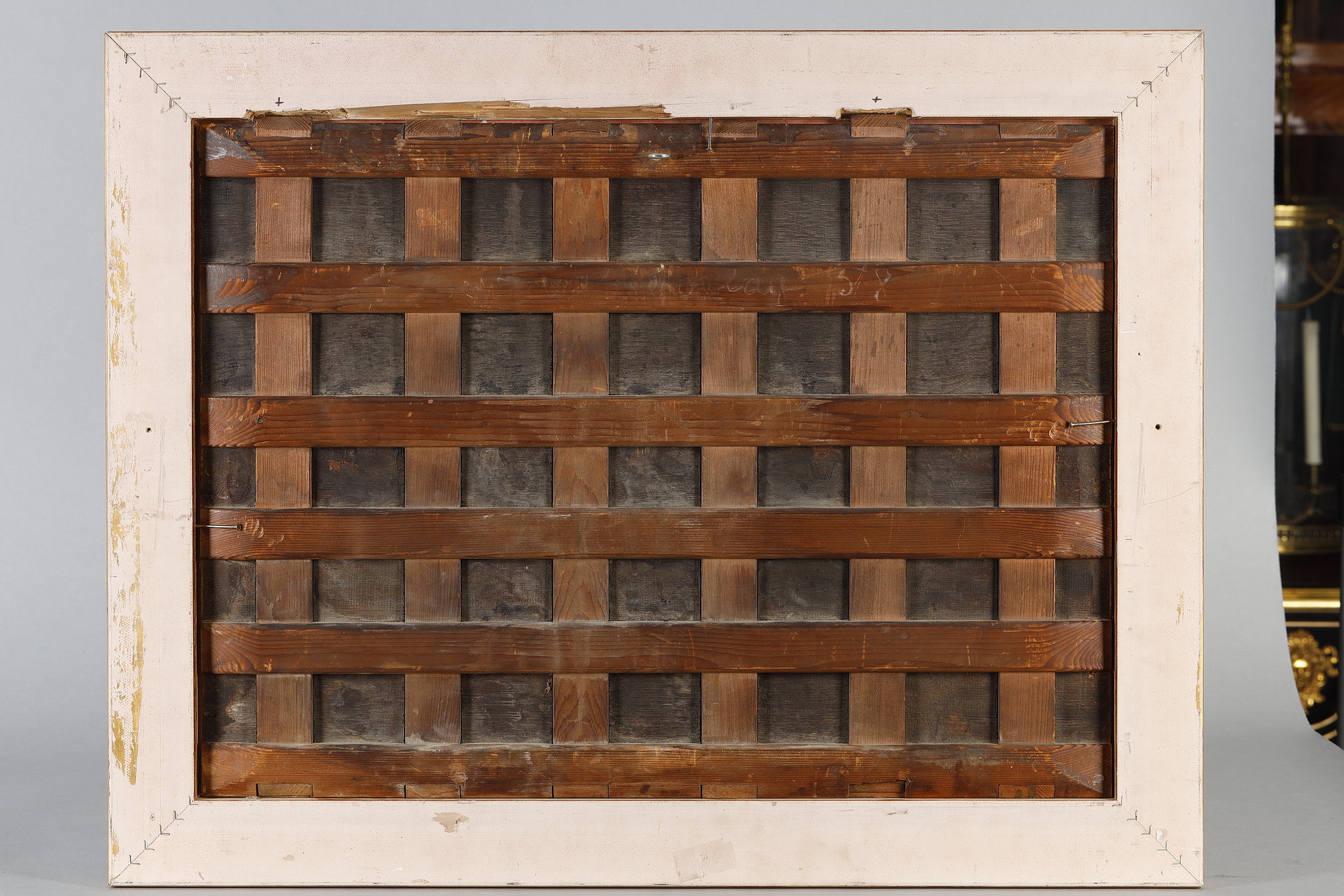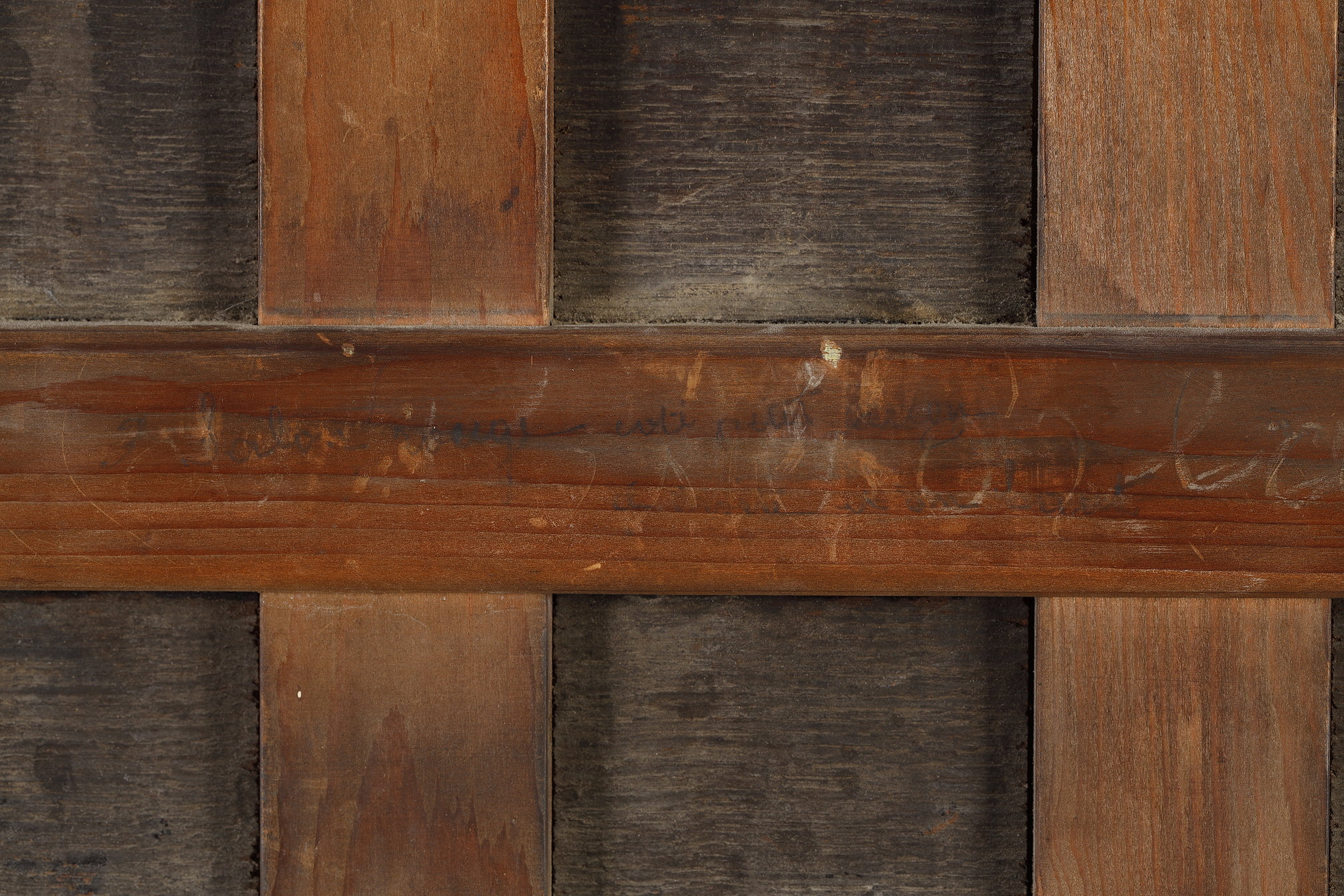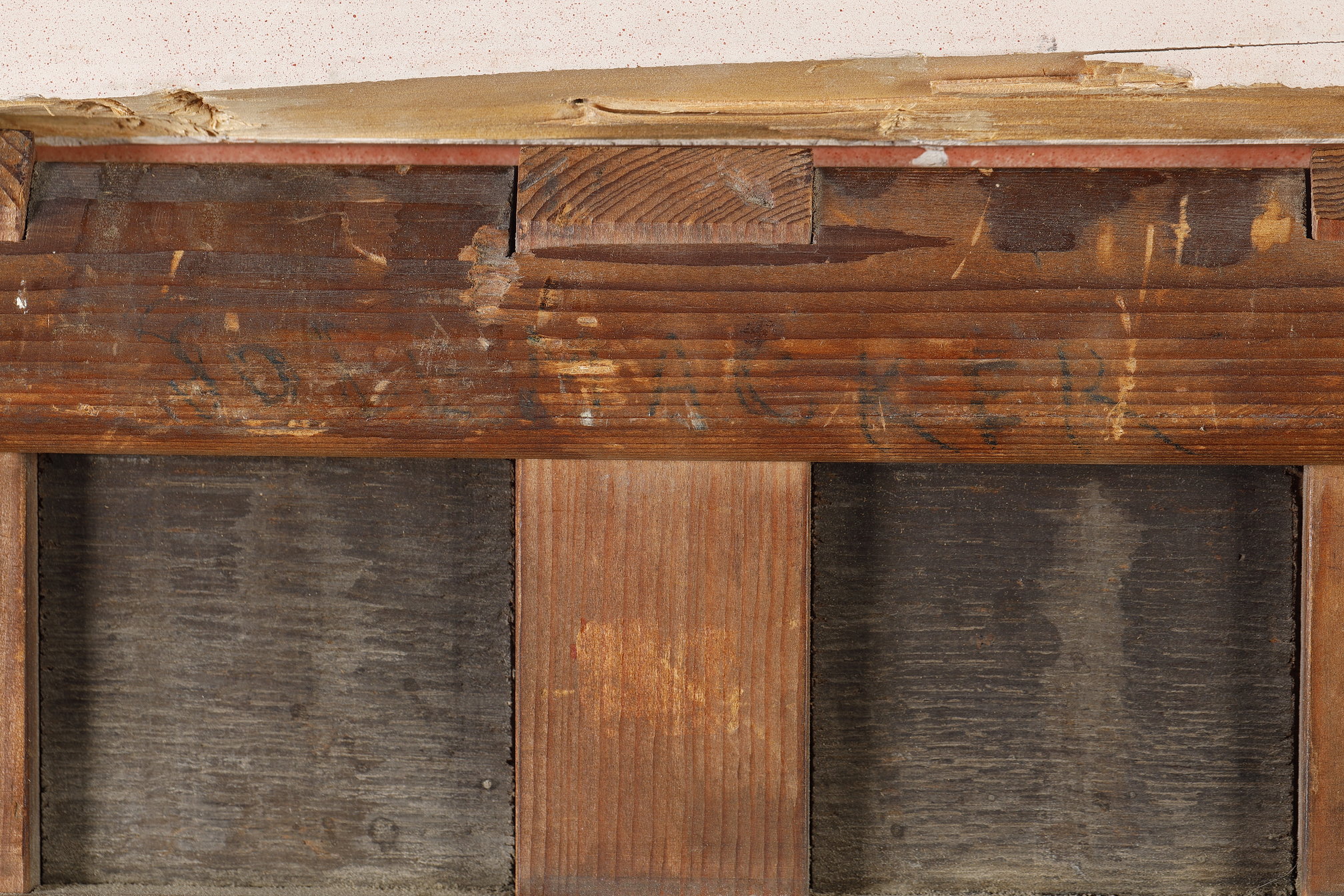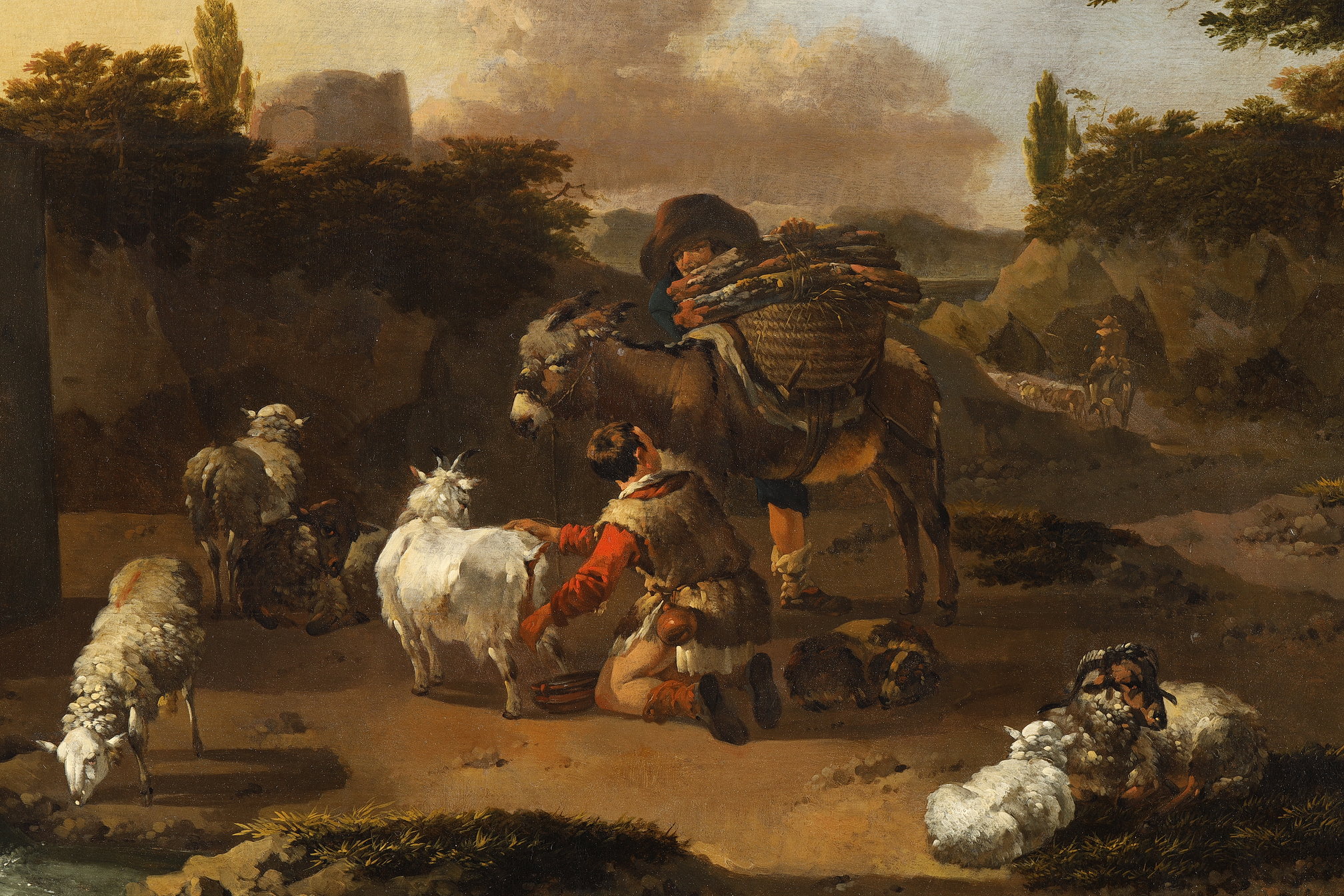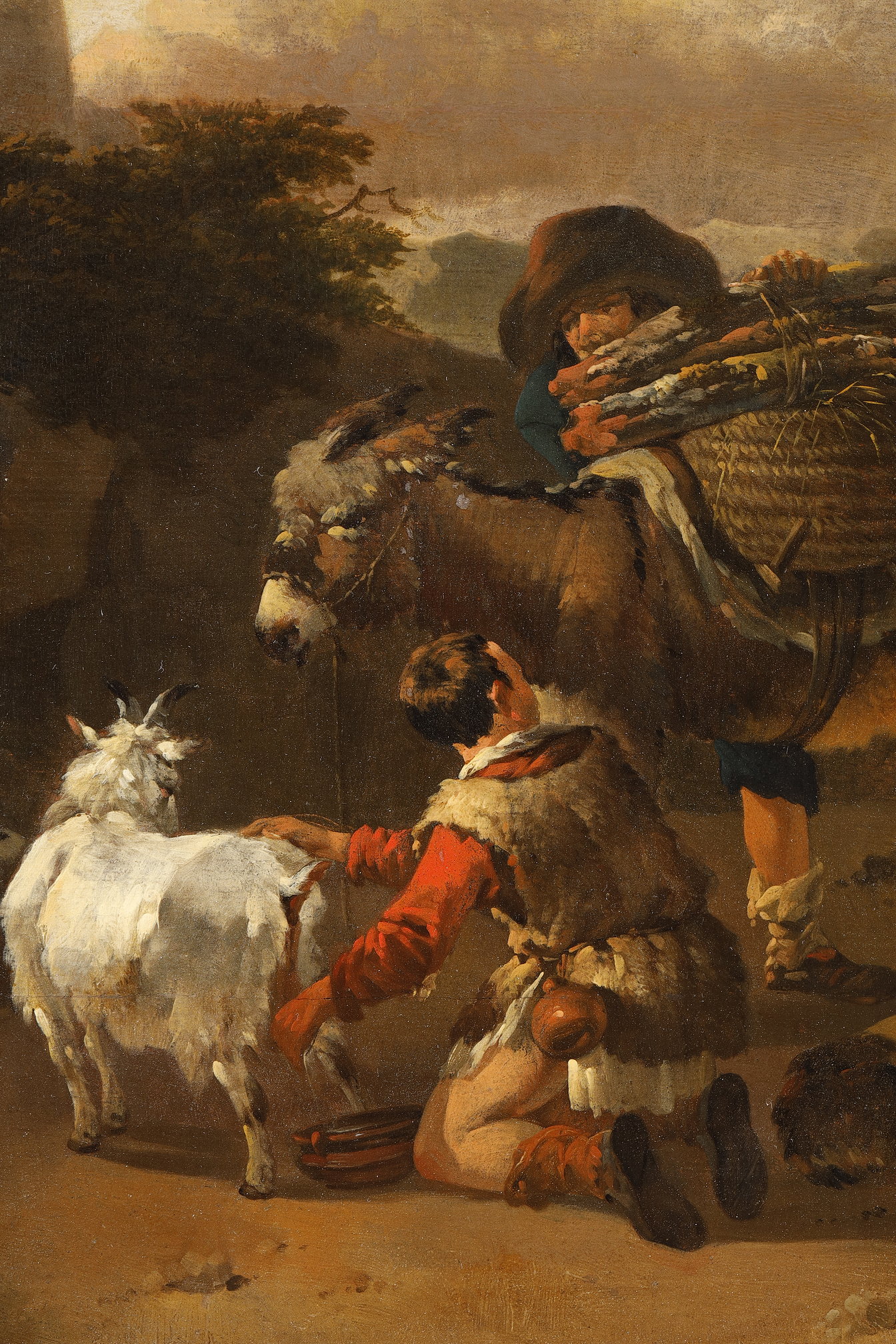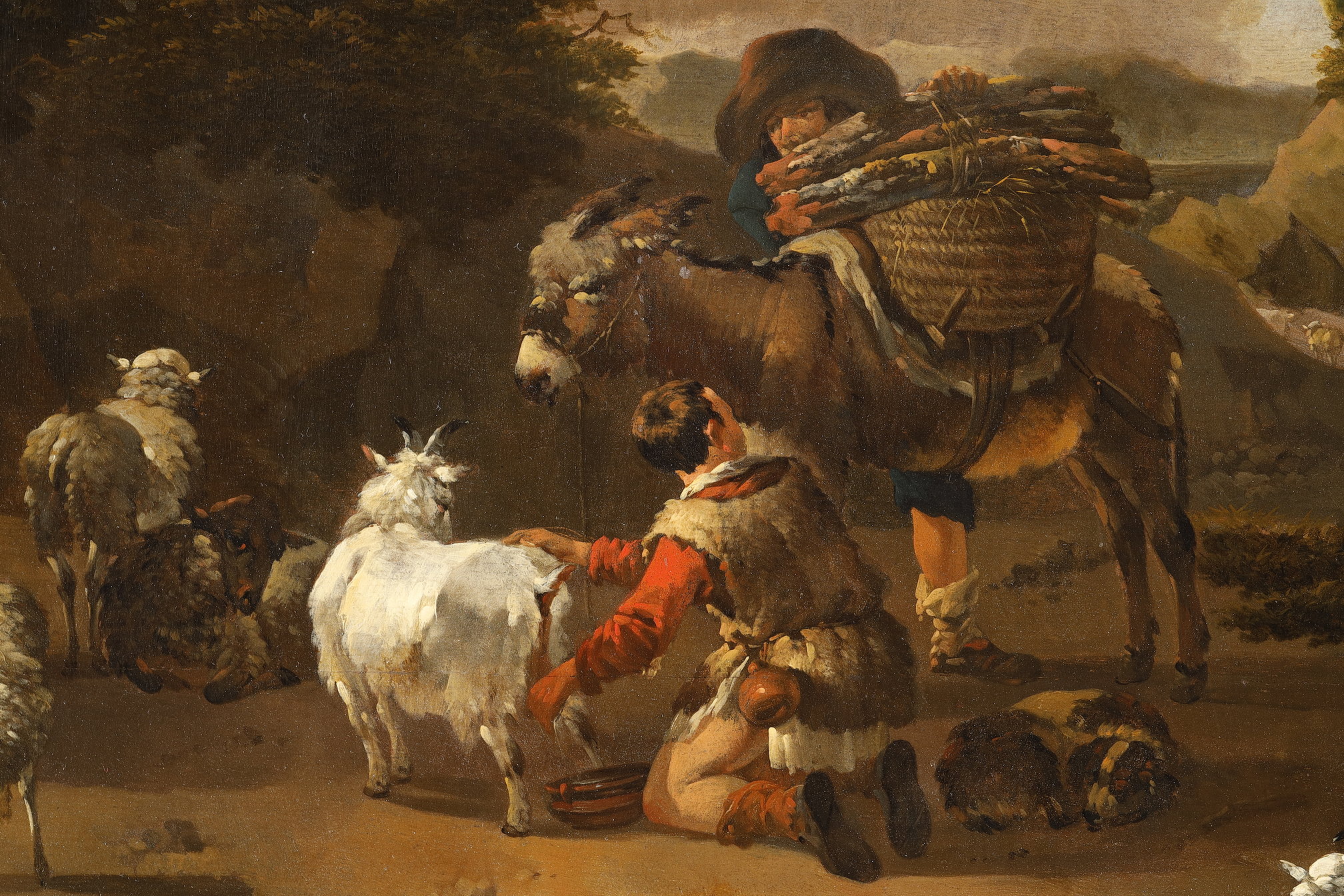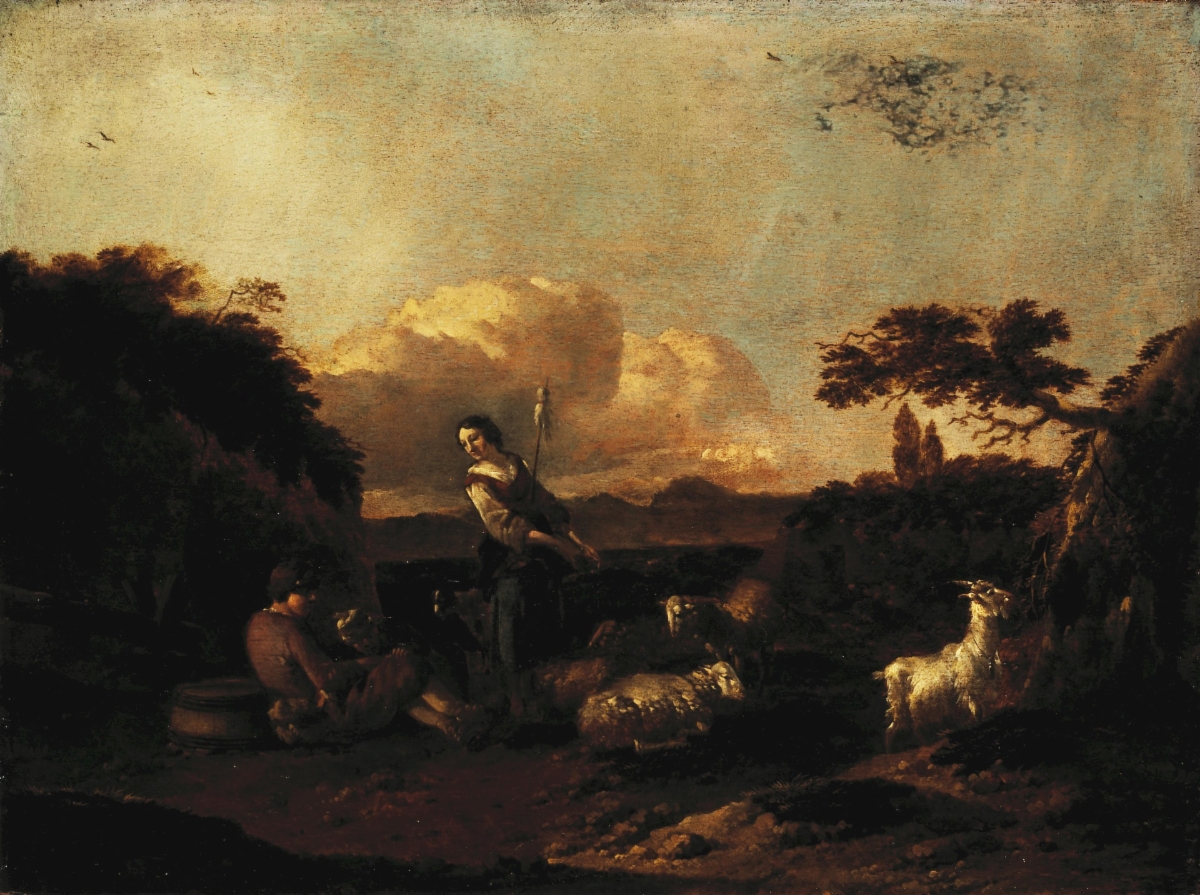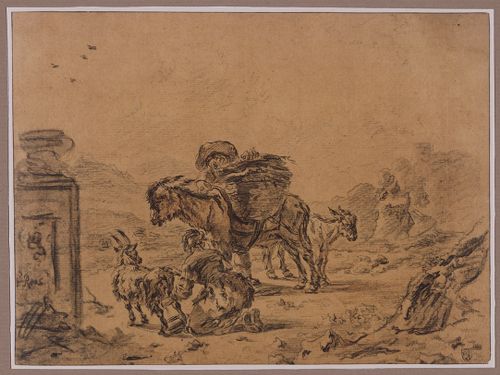Description
Shepherds with a flock, Jan Frans SOOLMAKER
Dimensions: H 48 cm x L 64.5 cm
Oil on canvas by the great Flemish painter Jan Frans Soolmaker (1635 – probably around 1686) whose paintings reflect an Italianate style often depicting shepherds and flocks or like an Arcadian scene.
Here, the painting presents in its center two characters surrounded by several animals in a pastoral landscape from which ancient ruins stand out in the background, and in the left part of the painting.
To the right, a tree stands before us, both green and also dry and broken. The ground also appears arid, although greenery is present in the background.
Soolmaker allows through this composition a natural harmony with an earthy yet peaceful color. The golden light of the sun is soft and warm and only a thick central cloud somewhat veils this open sky.
The standing figure with a hat stands behind the donkey. He keeps a bunch of wood in a wicker basket on the donkey’s back. Only his head protrudes and we notice that it is the exact central point of the painting.
In front of him, on his knees appearing to milk a goat, a young man looks at him. To his right and hidden in its shadow, a sleeping dog contrasts its dark coat with the goat whose light illuminates its white coat.
A sheep is interested in a stream flowing in the foreground, while two other groups of two lounge behind him and to the right of the painting.
We can notice, very subtly, a shepherd sitting on his mount, holding a long thin staff and leading at least three animals on the path through the mountainous landscape. This clearly demonstrates the work of details meticulously executed by this artist.
As usual, Soolmaker depicts here a rural scene with a balanced composition characterized by a soft palette and a pictorial technique emphasizing the detail of animal textures.
Some of his works are part of large museum and private collections, such as his painting shepherdess with a flock of sheep, from the Hermitage Museum, entered the collections in 1915 of the collection of Pyotr Semenov-Tyan-Shansky, after his death in 1914.
Where we clearly find the same textural work of the animals, ground and leaf and a similar composition with a semi-arid landscape and a single cloud in the center
Also by its presence in the collections of the Brussels Museum as mentioned in the “historical and descriptive catalog of old paintings from the Brussels Museum” written by A-J WAUTERS, p. 39.
Or in the Spanish national heritage collections with its lion hunt, formerly part of the collection of Queen Isabel Farnesio in the 18th century (inventory 10078534).
Influenced by Flemish and Dutch Baroque artists, notably by Nicolaes Berchem, from whom he borrows the style of idealized pastoral scene, we also find in his paintings the Italian influence of the period.
His work is thus part of the tradition of genre scenes and pastoral landscapes of 17th century Flemish art. This is why, the following century, its central scene was taken up by Karel La Fargue (1738-1793), whose drawing (in black chalk, gray wash and brown wash on yellow-orange paper) is today in the collections of the Geneva Museum of Art and History under inventory number 1912-493
